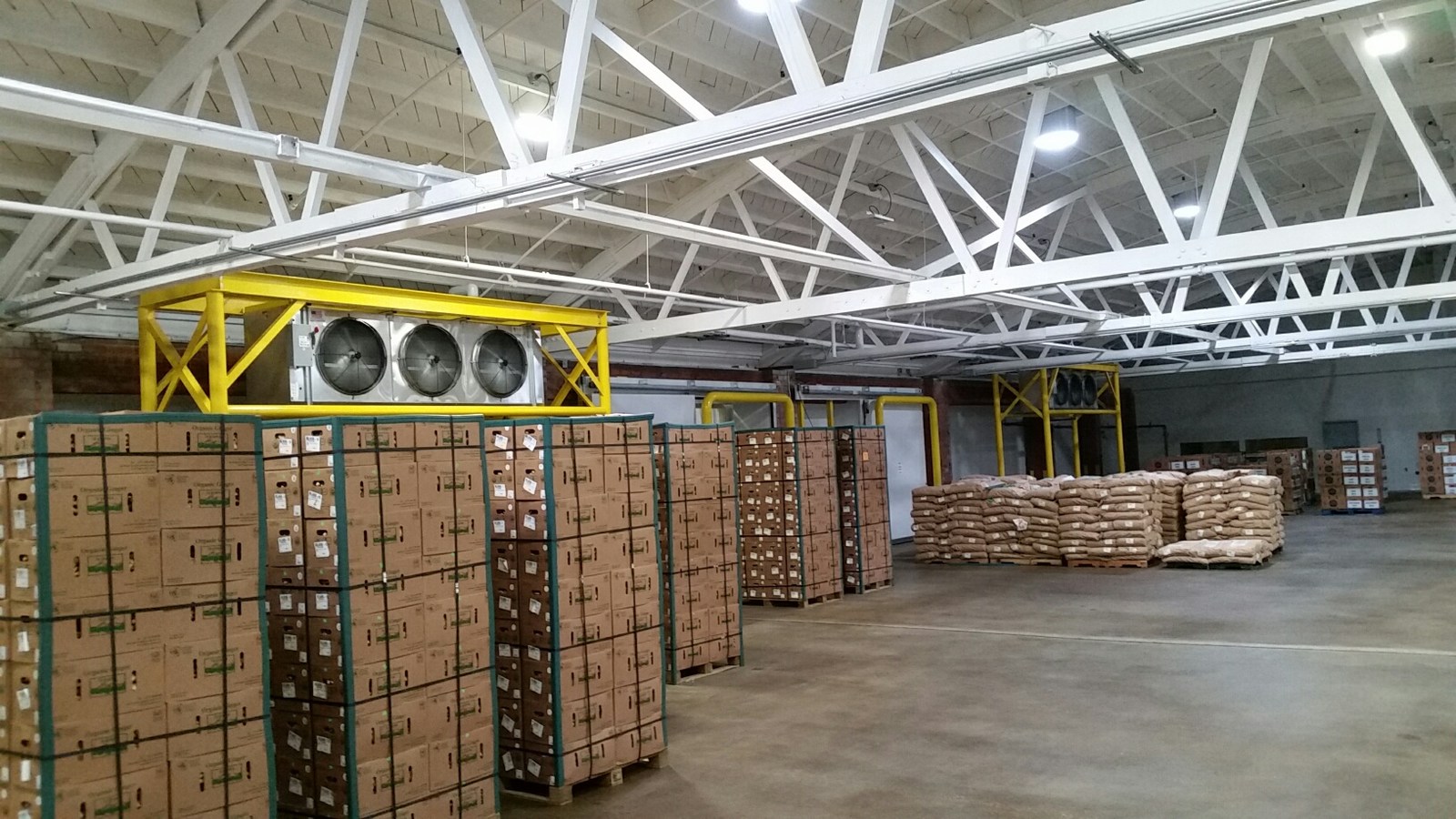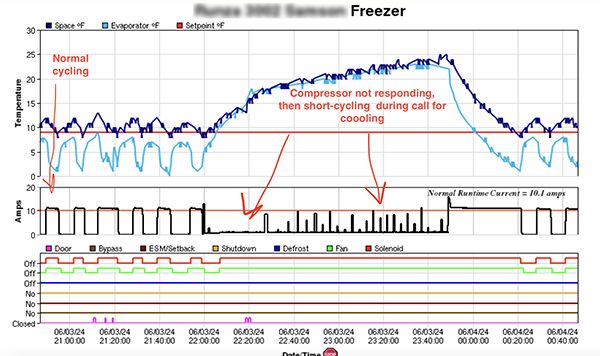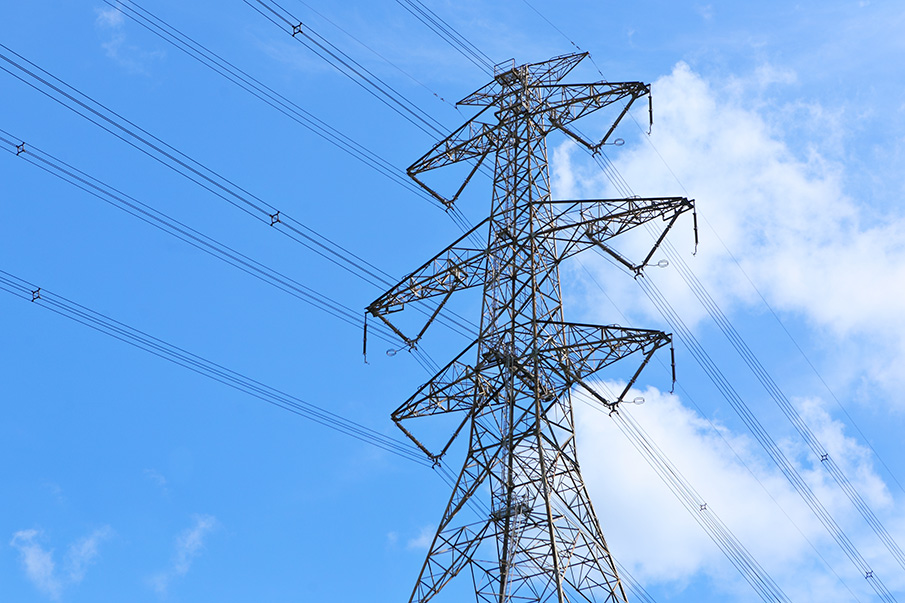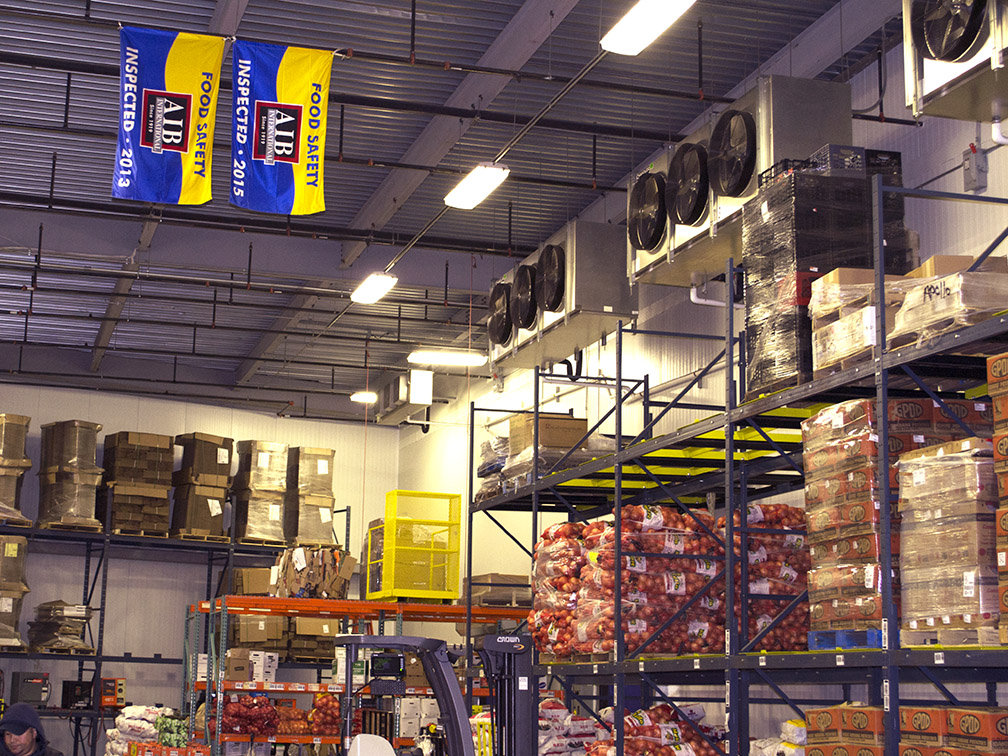Technological advances in automation and data-driven management have paved the way for improved efficiency in how cold storage businesses operate. Everything from remote access to temperature settings and defrost cycles, to robotic forklifts, to high-efficiency LED lighting systems are helping these facilities better manage costs and their important systems, according to a new article in The Packer.
It isn’t every day that a new product or method comes along to improve the operations of large commercial and industrial refrigeration equipment, so when something does hit the market that can radically change their business, people take notice. In a recent article in The Packer, a few trends that are making serious waves in the cold storage industry are explored in depth.
System Optimization
Inefficient operation of large coolers and freezers results in the consumption of 30% to 50% more energy than their optimized counterparts. Whether it’s upgrading the lighting in a refrigerated space from fluorescent or incandescent to LED, replacing traditional fan motors with electronically-commutated ones, or installing smart controls that shift loads and allow for cooling schedules to avoid large demand-based costs, nearly every cooler or freezer could benefit.
“Utility costs are rising, particularly the demand portion, which is the amount of power consumed during the utility’s peak demand periods,” Emre Schveighoffer, CEO and President of National Resource Management, said. “In some utilities, the demand charge can be up to $35 per kilowatt. That means if you turn on a 1,000-watt load for 15 minutes during peak use, the user pays a big penalty even though they only used it for 15 minutes.”
Remote Management and Historical Performance Data
Another product gaining popularity are control and monitoring platforms that offer remote management of refrigerated spaces. Such products provide access to the entire campus of coolers and freezers from a single point, which makes it a scalable and suitable solution for just about any-sized business.
Some of the management platforms also offer historical performance data, enabling a user to analyze a large amount of operational data to pinpoint inefficiencies and areas that could benefit from further improvement. This type of automatic data logging provides proof for M+V requirements, and helps facilities adhere to food safety regulations, according to Ted Kohlenberger, an industry veteran.
Efficient Components at Installation
New construction and expansion projects are ideal places to look for efficiency opportunities, said Craig Mack, director of warehouse and inventory services for Robinson Fresh. Energy-efficient insulated dock doors, automatic rolling doors, and third-party assessments are great measures.
“One trend we are seeing is people paying special attention that standard operating procedures and protocols are in place to address the role of cold storage warehouse (receivers and loaders) for the FSMA (Food Safety Modernization Act) Sanitary Transportation of Human and Animal Food Rule that went into effect in April,” Mack said.
Equipment Automation
On a smaller scale, something as seemingly minor as replacing switch-initiation lighting with ones outfitted with motion sensors and automatic dimming can actually make a huge difference. And on a larger scale, full assembly lines of robots loading and unloading product can speed up processing.
This includes receiving products from truck pallets using robots that auto-convey the goods into the warehouse and also back out to the trucks when ready, which he said a competitor currently is using.
“There’s lots of interest in the industry to use this technology to control costs and also cope with the shortage of labor,” said Paul Henningsen, chief operations officer for Henningsen Cold Storage, and co-creator of the Global Cold Chain Expo. “I’m also interested in automated forklifts in existing warehouses. There are a number of companies working on these. If they break that barrier, there will be tremendous demand.”
Regardless of the specific steps a business takes, there is nothing but upside to more efficient operation and management of a cold storage facility. Technology is allowing businesses to stay competitive, reduce overhead costs, extended the life of their equipment, and reduce their energy consumption. It also allows them to better adhere to quality and safety regulations.




